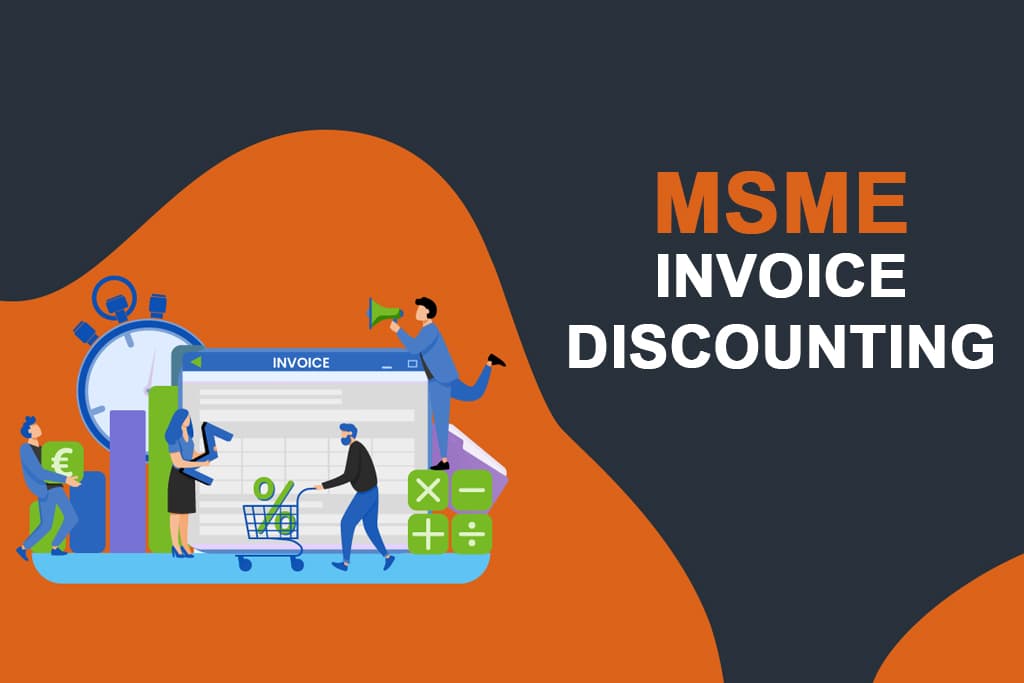
Invoice Discounting
Businesses can use invoice discounting to gain immediate access to funds held in outstanding invoices as well as to tap into the value of their sales ledger. It’s simple: when you invoice a customer or client, the lender pays you a percentage of the amount, increasing your cash flow.
Invoice discounting is also referred to as a series of short-term business loans secured by invoices. In other words, the lender knows you owe them money and is willing to lend you the majority of it before your customer pays you.
Small-to-medium-sized businesses’ cash flow may be stressed while waiting for clients to pay invoices. This problem can be solved by utilising invoice discounting.
1,007 Total Views
Our Process
MSME Recovery
Businesses can use invoice discounting to gain immediate access to funds held in outstanding invoices as well as to tap into the value of their sales ledger. It’s simple: when you invoice a customer or client, the lender pays you a percentage of the amount, increasing your cash flow.
Invoice discounting is also referred to as a series of short-term business loans secured by invoices. In other words, the lender knows you owe them money and is willing to lend you the majority of it before your customer pays you.
Small-to-medium-sized businesses’ cash flow may be stressed while waiting for clients to pay invoices. This problem can be solved by utilising invoice discounting.
Businesses frequently run out of cash when they have outstanding invoices. Companies can use invoice discounting to gain a portion of the money right away.
The procedure is straightforward: when you send an invoice to a customer or client, the lender matches a portion of the payment, increasing your cash flow.
Another way to consider invoice discounting is as a series of short-term business loans backed up by invoices. In other words, the lender is willing to pay you the majority of what you owe them before your consumer pays you. MSMEs can access operating capital within 24 to 72 hours by bill-discounting their overdue invoices.
The following is a list of important documents needed for invoice discounting.
- KYC of directors
- CIBIL record of directors
- Address proof and PAN card of the company
- GST registration certificate
- Filed GST returns
- Books of audited financials
- Bank statement of the past 12 months
- SSI or MSME businesses can apply for NSIC bill discounting by submitting the NSIC Bill Discounting Scheme Application Form along with the necessary documents to the relevant NSIC office.
Bill Discounting Facility Service Fee
- In addition to the interest charges, the minimum service charges will be 0.25% for the first 30 days and 0.08% per week after that, up to a maximum of 3% of the principal amount (i.e. the amount of invoice to be discounted). In the case of businesses with an NSIC-approved bill discounting facility, a commitment charge of 2% per annum on the authorised limit is collected in advance rather than a service charge in each transaction.
- Service charges are reduced for units located in the northeastern region. The minimum service charge for units in the North Eastern Region will be 0.13% for the first 30 days and then 0.04% per week up to a maximum of 1.50% of the principal amount (i.e. the amount of invoice to be discounted). In the case of businesses located in the northeastern region that have an NSIC-approved Bill Discounting facility, a commitment charge of 1% per annum on the authorised limit is collected in advance rather than a service charge in each transaction.
